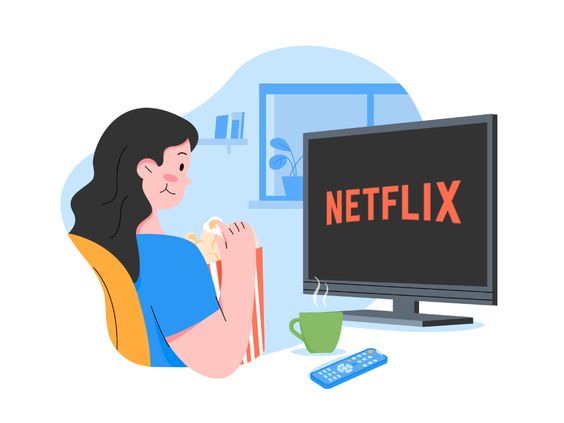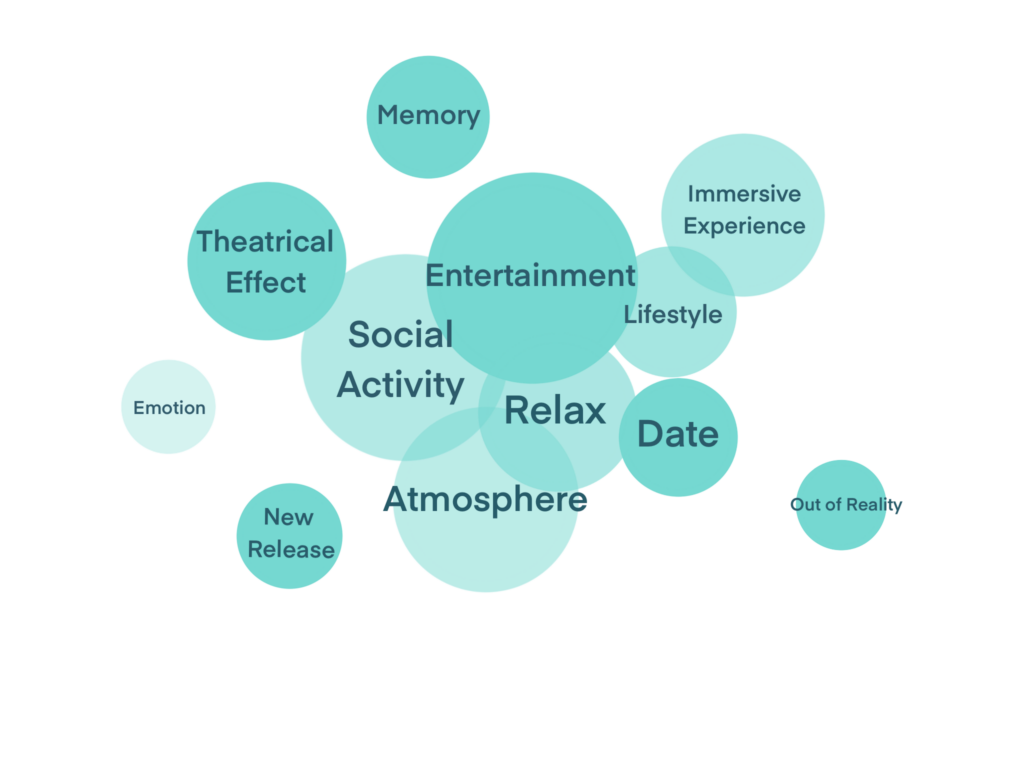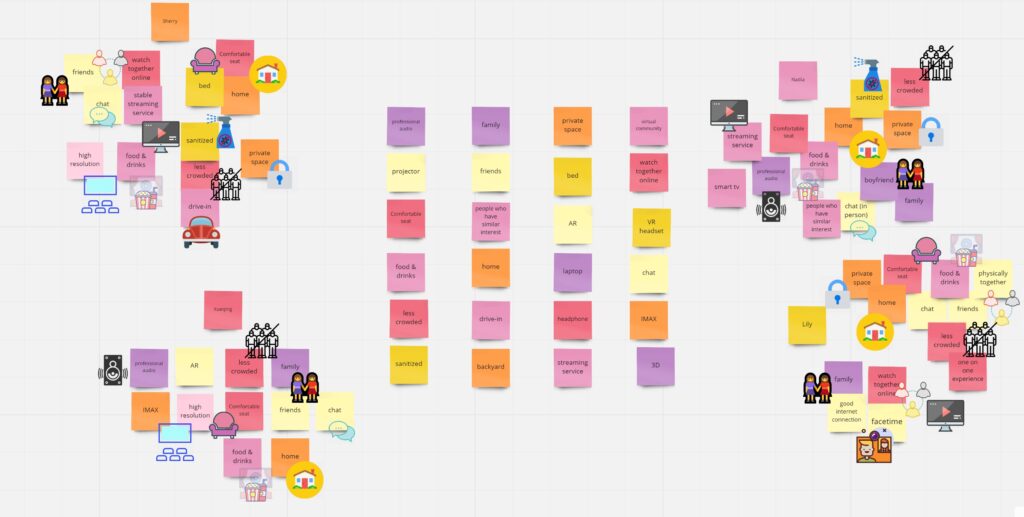The Crisis
In the year 2020, the whole cinematic industry is facing a crisis. Due to the breakout of Covid-19, many movie theaters have been closed and encountered a survival dilemma. According to the Domestic Movie Theatrical Market Summary from 1995 to 2020 provided by The Numbers, the annual ticket sales and the box offices both had drastic decreases in 2020.
The global cinema revenue is predicted to drop 66% this year.(Szalai) It is a tough time for movie theaters. Without continuous cashflow, big chains like AMC have to face the possibility of bankruptcy, not to mention small businesses like individual movie theaters have lost their loyal customers and is facing financial deterioration. Not only in North American, the Chinese cinema industry has also lost nearly 2 billion dollars since movie theaters remained closure during the lunar year holiday, which is one of the most profitable periods in a year. (Clark)
While the movie theaters have to suffer the worst financial crisis, the streaming services have been welcoming their best time ever. Because of social distancing practices implemented worldwide, more people have chosen to stay at home, therefore at-home entertainment saw its users booming and streaming service replaces movie theatres as a safe and comfortable way to watch films for many viewers.

Also, with some blockbusters choosing to skip theater lines to release on streaming platforms, such as Mulan has released on Disney Plus, more customers got attracted away from visiting movie theaters, which makes it harder for movie theaters to survive under financial pressure.
The Changes of Behaviors

In fact, the impact of streaming service has emerged even before the pandemic that “major studios were starting to route smaller dramas and comedies toward streaming services instead of theaters.”(Barnes and Sperling) The convenience and efficiency of digital platforms have been gaining momentum and attracting viewership in recent years. What is more worrying is that, as more people adapt to watch films on streaming service, the experience of moviegoing in the movie theater may be dull and soon forgotten. They may not even miss movie theaters after the pandemic. Movie theater, as “a vital part of social life, providing jobs for many and entertainment for all”(Nolan), if it disappeared, a lot of people is going to lose their jobs, and for us, the moviegoing experience continued for generations will be gone forever.
The coronavirus pandemic pushed movie theaters to the moment that requires revolutionary changes to accustom what is happening around. Rich Greenfield, a founder of the LightShed Partners media research firm, said “The behavior was already shifting, but this hits the accelerator pedal.”(Barnes and Sperling) The changes in customer behaviors are accelerating. However, the trend is a potential opportunity for movie theaters to renovate their business and brace new challenges with confidence. It can coexist with its competitor — streaming service — with new operational measures. It needs to understand the concerns of customers and seek the true values of the movie theaters therefore transform that values into what is right for customers.
Based on a survey of U.S.adults conducted in August, there are 74% of people who are not likely to go to a movie theater in September. (Richter) The main reason that people hesitate to return to movie theaters is safety concerns. According to the survey by Ormax Media (Scroll), physical distancing and hygiene norms are the most important factors, and the next is the concern of infected cases in the area. The customer’s interest in one specific film is relatively less important. As a participant in the first-hand research session said, she planned to watch Tenet in the movie theater but changed her mind at the last moment because of the worry about the crowd coming for the blockbuster. Also, the survey shows that people are more likely to watch movies at home or movie theaters that strictly follow safety guidelines. The resurgence of drive-in theater strengthens the point that people are worried about public spaces, people are isolated in their cars while watching films. Therefore, generating an effective practice to give assurance of sanitary is important for post-pandemic movie theaters.
There is more to accomplish than sanitation alone to satisfy worried customers at this moment. Based on the literature research, I found some insightful post-pandemic designs that redesign spaces by placing entrances and exits to control the flows of customers and help to mitigate crowds’ concentration; and they also use smart technologies to help movie theaters to learn how to quickly conform to the new norms, such as the application of QR code which helps to reduce the touchpoints of customers and avoid the interaction with employees in the movie theaters.
The Core Values
Although many people chose to watch movies via other media, they are still looking forward to the theatrical experience of movie theaters. In the first-hand survey, Movie theaters got the highest rating of experience, and the studio effect is the thing that most of the participants are looking for in movie theaters. Movie theaters can provide the studio effect that is hard to be replicated by streaming services or television to deliver the immersive experience to the users’ home.
Except for the theatrical experience, another core value of movie theaters is the communal experience. Communal experience is an interaction between audiences, the shared laugh, gasp of horror, and shock, all of these reactions create tangible effects of the movie. It can enhance the movie experience on the emotional level. During the pandemic, the physical proximity of people is stretched so far that interaction and communication might be an urgent demand in pandemic life. Reflected on the results of the research (both survey and co-design), the social value of the movie theaters was always mentioned. The memories of movie theaters usually related to friends, dating, and other social activities.

The Expectation
Companion, privacy, comfort, and theatrical experience are the main demands of people. The following is the co-design session. In the session, the cards in the middle of the board are some assets of movie experience created by myself, and participants are asked to pick up their favorite assets to construct the experience they wish for the movie viewership, additionally, they are also free to create their own assets. The results of first-hand research indicate that people are more willing to watch movies together rather than watching alone. Every participant has their own specific demand for companion and conversation. Some need face time, some want physical contact, and some others think chatting is enough. The privacy issue is also emphasized here. People wish to have a private space to enjoy movies without disturbances and strangers, and it is connected with the safety concern. They feel that public spaces, like movie theaters, can not assure the sanitary of objects around. And sitting with a crowd of strangers for 2 hours makes them worried during the virus outbreak. Comfort and studio effect are also indispensable to them. They believe that home is the most comfortable and private place, and lying in the bed, in a comfortable seat, and watching movies with food and drinks are the best combo. The studio effect has more supporters in the participants of the survey. In the question of “what is the expected way of watching movies”, immersive experience is one of the most frequently mentioned words. In the survey, when asked about “what can most enhance movie experience”, most participants chose high-quality equipment.

Sources:
1.The Numbers. Movie Market Summary 1995 to 2020. www.the-numbers.com/market/.
2.Szalai, Georg. Global Cinema Revenue to Drop 66 Percent in 2020 Amid Pandemic: Forecast. 4 Sept. 2020, www.hollywoodreporter.com/news/global-cinema-revenue-to-drop-66-percent-in-2020-amid-pandemic-forecast.
3.Clark, Travis. China’s Box Office Is down Nearly $2 Billion as Movie Theaters Remain Closed amid Coronavirus Concerns. 3 Mar. 2020, www.businessinsider.com/coronavirus-chinas-box-office-drops-by-nearly-2-billion-2020-3.
4.Watson, Amy. “Theaters vs. Streaming: First Time Movie Viewing Preferences in the U.S. 2020.” Statista, 17 Mar. 2020, www.statista.com/statistics/947757/theaters-streaming-watching-movies/.
5.Barnes, Brooks, and Nicole Sperling. Movie Crowds Stay Away. Theaters Hope It’s Not for Good. 15 Mar. 2020, www.nytimes.com/2020/03/15/business/media/movie-theaters-coronavirus.html.
6.Richter, Felix. “Infographic: Bleak Outlook for Movie Theaters.” Statista Infographics, 4 Sept. 2020, www.statista.com/chart/22810/likelihood-of-americans-going-to-a-movie-theater/.
7.Nolan, Christopher. “Opinion | Christopher Nolan: Movie Theaters Are a Vital Part of American Social Life. They Will Need Our Help.” The Washington Post, WP Company, 21 Mar. 2020, www.washingtonpost.com/opinions/2020/03/20/christopher-nolan-movie-theaters-are-vital-part-american-social-life-they-will-need-our-help/.
8.Staff, Scroll. “Lockdown: Audiences Willing to Return to Cinemas Provided Safety Protocols in Place, Says Survey.” Scroll.in, Scroll.in, 25 May 2020, scroll.in/reel/962869/lockdown-audiences-willing-to-return-to-cinemas-provided-safety-protocols-in-place-says-survey.




